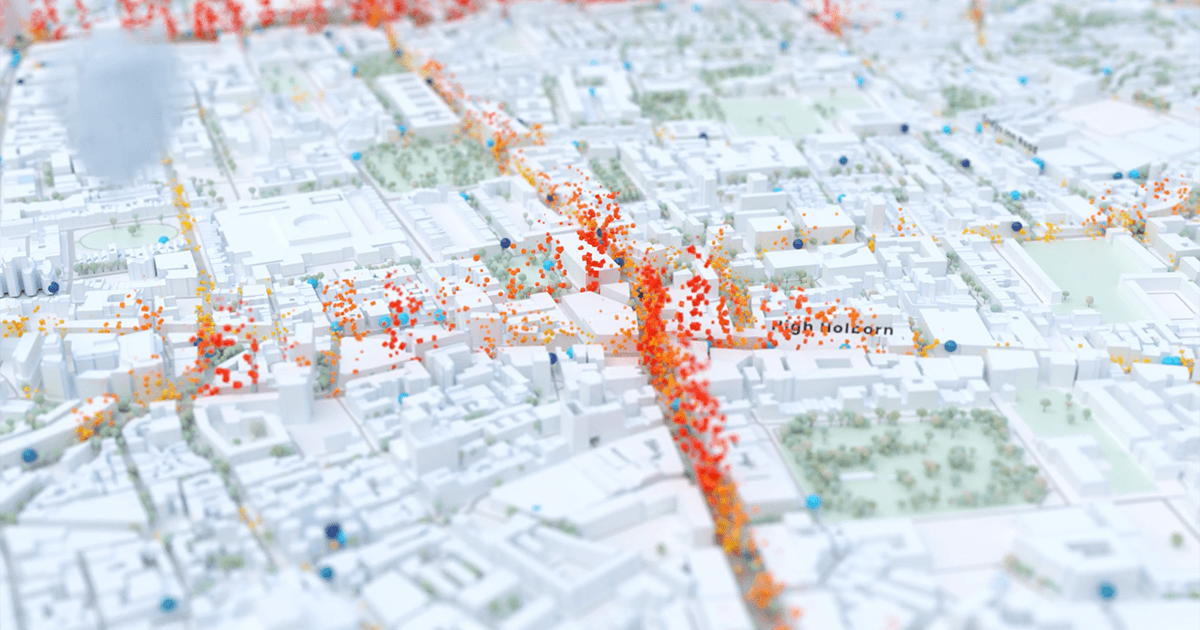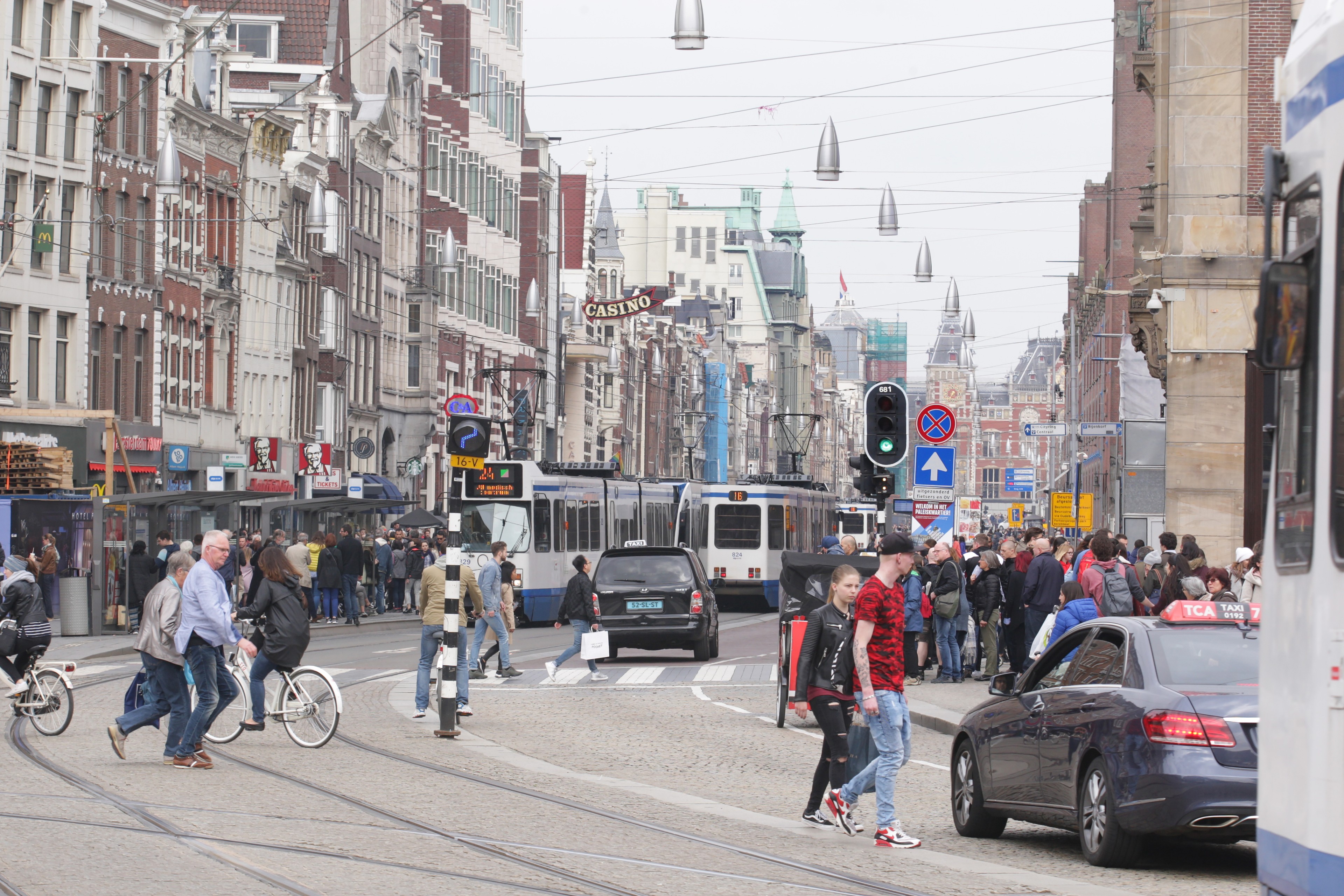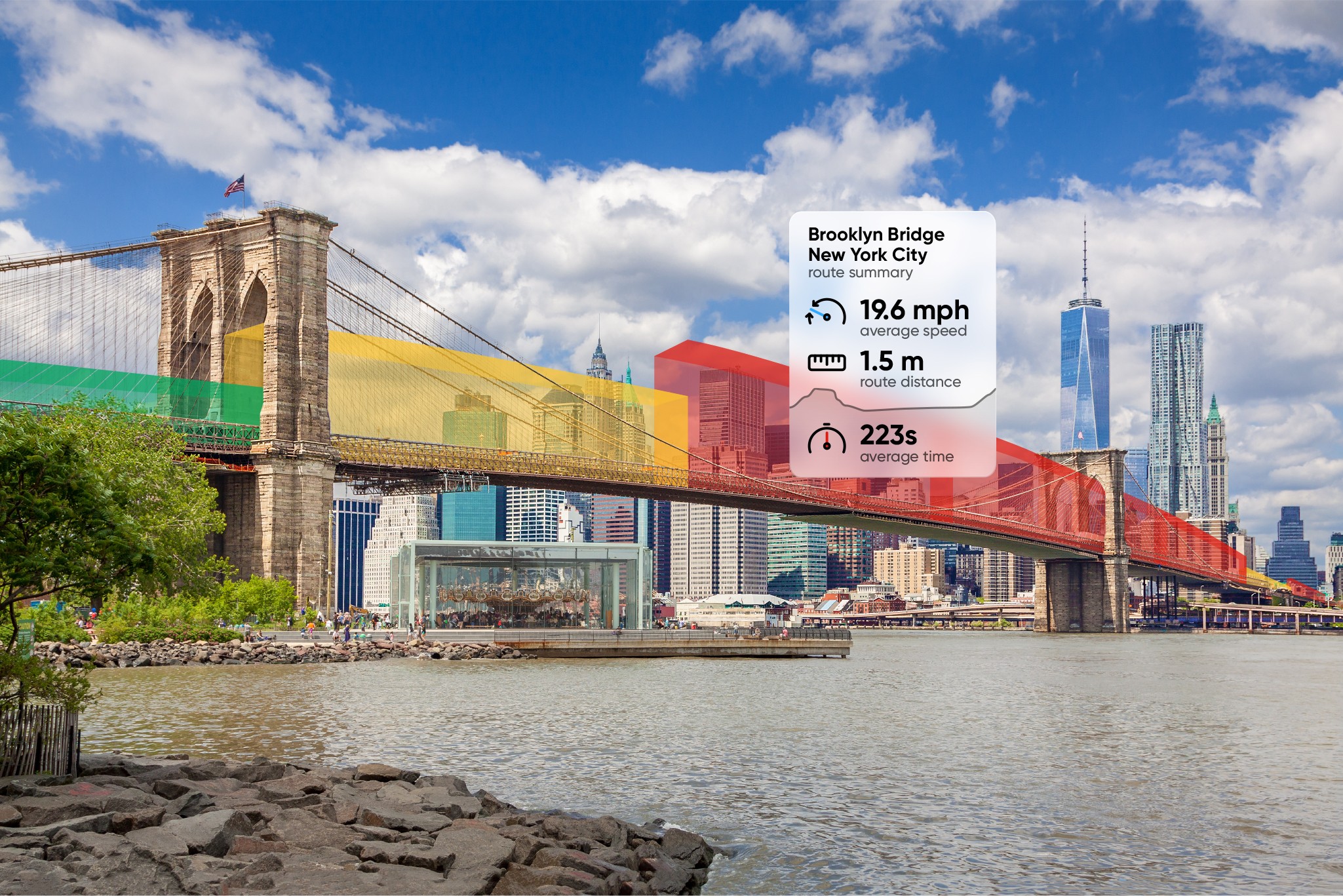Q&A: What's happening with global traffic, with TomTom's traffic expert
&w=256&q=90)

Traffic is a universal challenge. Roads and cities all over the world must constantly manage congestion and traffic to allow vehicles and people to move freely, with ease. While lowering stress might be the first thing most of us worry about in this context, managing traffic is part of the much bigger picture of sustainability, emissions and the livability of our cities and towns. Technology is one of the biggest tools to tackle this challenge, so we spoke to one of TomTom’s traffic experts to find out more.
Ralf-Peter Schäfer, TomTom’s VP Product Management of Traffic, Travel and Routing, knows traffic intimately. Where most of us would visualize tailbacks and red brake lights stretching into the distance, Schäfer sees data, complex behaviors and a massive opportunity to improve the world.
A typical day for Schäfer involves managing and overseeing a vast team of product managers and engineers that are all working to address the mobility challenges of cities — congestion, navigation, travel and transport. We sat down with him to get the overview of the state of traffic, where it’s going and how technologies like generative AI and machine learning are opening the door to new possibilities for managing traffic and making cities safer and less congested.
 Ralf-Peter Schäfer is fascinated by the problem of traffic. He's even more fascinated by how data and tech can be used to solve it.
Ralf-Peter Schäfer is fascinated by the problem of traffic. He's even more fascinated by how data and tech can be used to solve it.The biggest challenges cities face
TomTom Editorial (TTE):
What are some of the biggest challenges cities face?
Ralf-Peter Schäfer:
Congestion is still the major problem and challenge for cities, for countries all over the world. Even though countries vary, they all experience traffic.
For more than 12 years now, at TomTom, we’ve been providing real-time traffic information and measuring and monitoring traffic trends all over the world with our Traffic Index, our congestion index. Typically, we measure hundreds of cities around the world, and we can tell where congestion is strong and where we see improvements.
Knowing how congestion moves, where it starts, we can begin to examine how cities can improve their traffic situations. The first thing is understanding congestion, understanding the problem. The next, more important thing, is to take a conclusion and ask, “What can we change and how can we improve the situation?”
The impact of traffic and congestion, and its causes, is different from city to city. But all its challenges boil down to sustainability and making our cities and mobility more sustainable.
The complex problem of traffic
TTE:
What makes traffic so challenging?
RPS:
Precise prediction is the most complicated discipline of traffic management.
Traffic is a very complex phenomenon. It’s about the movement of people, and people influence predictions that makes it even more complex. People don’t care about traffic yesterday, they care about the future, but if they all think there’ll be a traffic jam at 9am, they’ll all drive at 10am, then they create a jam at a later time.
Or if I navigate from A to B, what happens now and in the past is not relevant, it’s only what happens in the future that is relevant. Because I want to know if I’m one hour into my journey, what’s happening there, at that road element.
This behavior is a complex combination of human behaviors, making it very hard to make a deterministic formula.
Historic data helps us model historic traffic trends, what really matters is being able to accurately predict what’s going to happen, doing that requires data and an ability to analyze it accurately and quickly.
That’s why data is the foundation for creating impact and change.
Who is leading at traffic management?
TTE:
What countries are doing a better job at managing traffic, and how are they doing it?
RPS:
There are indeed differences across the world and some countries have less congestion than others.
It’s clear, managing traffic shouldn’t just be about managing cars or making the situation better for cars. Some have focused activities on stimulating new modes of transport to develop a more balanced transport network that reduces congestion. The typical examples are Amsterdam or Copenhagen, who’ve moved road demand to bikes and pedestrian traffic.
This modal-split is something that must happen for the good of our cities. In cities like London and Amsterdam, space is limited, reducing congestion isn’t about building more roads or rebuilding road networks for cars, it’s about the heart of the city and giving space back to other modes of transport, giving space back to people and not turning city centers into parking lots.
This isn’t easy to do, it’s not simply a case of blocking roads to cars and opening them to bikes. Smart decisions need to be made, data is central to helping city councils, governments and planners make the best informed, data-driven decisions, about how to improve congestion and traffic in their cities.
 Amsterdam is a world leader when it comes to multi-modal transport. Its locals regularly use cars, taxis, buses, trams, their feet and bikes to get around.
Amsterdam is a world leader when it comes to multi-modal transport. Its locals regularly use cars, taxis, buses, trams, their feet and bikes to get around.How TomTom is helping cities manage traffic
TTE:
What is TomTom doing do help the world manage traffic and congestion?
RPS:
We’ve had a leading traffic product for many, many years. My team and I have been working for 25 years in this domain and we’ve created a full stack of technology to understand the mountains of traffic data, and create relevant applications to help companies, businesses and governments understand traffic, congestion and travel time.
TomTom is built on a foundation of good people, skills and a strong team with a lot of experience in this space, we connect that with a valuable business model to grow our community of connected devices, cars, people and other data sources to enrich our traffic data. We now have over 600 million devices providing billions of datasets every day to help us, and our partners and customers, understand traffic.
If we can understand the deep complexity of traffic, we can help town planners design better, more livable cities, help delivery companies optimize and maximize their business and we can help people get from A to B smoothly, faster and more efficiently.
Of course, we can talk about business, but this is all part of a much bigger conversation on sustainability. All of what we do with traffic is to contribute to sustainable decision making.
The future of traffic
TTE:
Where are things going next for traffic? What does the future of traffic management tech look like?
RPS:
AI is a big topic right now, but we started using it years ago to address challenges in traffic — building complex algorithms and training machine learning models to understand traffic, develop advanced traffic prediction models and measure traffic incidents in an automated fashion.
With technology growing in this area, there’s a huge opportunity to automate more of our analysis, automate more of our data gathering and scale and improve our already highly developed traffic products and tech stack, taking them to another level.
One of the most successful growth areas for traffic products at TomTom results from the growth of the connected car. Some 15-20 years ago, OEMs, fleet management companies started to put modems and GPS devices in their car. They could then locate their cars continuously, capture data and build a huge data pool of information about congestion, travel time and movement. This is the foundation to drive really strong traffic products and technology, but now with technologies like AI and machine learning and Big Data we can understand complex traffic problems, understand the way people move on a societal level much better and predict people’s movements with more accuracy and greater speed.
As cars get progressively more advanced, and use new sensor arrays, the connected car is driving completely new stacks of scalable technology to measure congestion and support data-driven decision making.
We’ve already seen the great impact our traffic products can make, with these new technologies we can take those to the next level of scale, effectiveness and freshness.
 TomTom's traffic data gives insights into average speeds, route distances, travel times, traffic volumes and flows.
TomTom's traffic data gives insights into average speeds, route distances, travel times, traffic volumes and flows.Is AI in traffic management a concern?
TTE:
Should we worry about AI being used in applications that understand traffic and the movement of people?
RPS:
Overall, I see the deployment of AI in the transportation sector as something very positive. We are looking at broad challenges of cities, automotive companies, governments and consumers, and AI offers a tool that can help us address more of these, more quickly and with improved results. In the case of sustainability, reducing emissions, anything that gets us there sooner is a good thing.
Privacy and AI is a topic we need to think about.
On a personal level, there may be concerns that AI could track people, and for that we need to ensure there is clear regulation and law to stimulate the protection and privacy of individuals.
Even before we talk about AI, privacy protection has been a core element of our strategy. We store our data and collect data already fully anonymized. We respect the privacy of people. And we want to understand movement patterns in a more collective sense. We want to understand congestion, traffic and how people move from A to B, we don’t care about a single individual, it’s a fundamental principle.
The exciting future of traffic tech
TTE:
What excites you about the future of traffic and its associated technologies?
RPS:
What excites me most is the continuous growth of our traffic data community and data pool, and how fast we can develop new technology right now, especially with AI and machine learning.
We’ve seen a big boost with the introduction of OpenAI and other large language models (LLMS), and we can expect an even more increased pace in the next five to 10 years. At TomTom, this is going to help us scale fast, and solve even more complex problems in the traffic space. That’s very cool.
Machine learning on one side will help us better predict the movement of people and have a better traffic model to power our navigation applications. But it can also bring us to new territories with our new map [TomTom Orbis Maps] to address all the traffic problems outside the road and understand cyclist and pedestrian and public transit movements, and have a more global context of the movement of people and change towards sustainable mobility.
That’s a really exciting prospect for TomTom, that we’ll be able to take everything we know about traffic congestion and apply it to all kinds of other modes of transport thanks to our new map.
People also read
)
Q&A: How is TomTom helping fix the pains of the EV industry?
)
Traffic data: The key to effective road traffic management
)
What is traffic prediction and how does it work?
)
Deconstructing traffic and the power of prediction for mobility and on-demand
* Required field. By submitting your contact details to TomTom, you agree that we can contact you about marketing offers, newsletters, or to invite you to webinars and events. We could further personalize the content that you receive via cookies. You can unsubscribe at any time by the link included in our emails. Review our privacy policy.